Proton Prevé (portuguese/spanish?) - SCHEDULED? ... whatever..
Proton Holding's all new sedan and maiden global car is called PREVE and costs 540 million ringgit ($176.27 million) to develop.
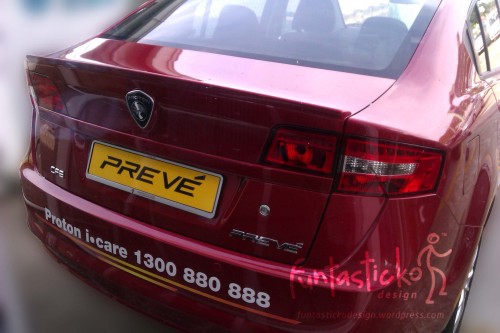
Proton Prevé – our first impressions of the IAFM+ and CFE
The name of Proton’s P3-21A was officially confirmed yesterday, and the date of its arrival has also been mentioned – the Prevé is set to be launched by Prime Minister Datuk Seri Najib Tun Razak on April 16.
Ahead of the car’s premiere, Proton invited the media to a preview and test drive session with the car yesterday in Putrajaya. Photography wasn’t allowed, so we don’t have photos of the Prevé aside from what you see here, which is a selection of highlight shots provided by Proton.
The test drive route was comprehensive enough though, spanning 157 km in total, with both the normally-aspirated IAFM and turbocharged CFE variants driven, so both Anthony and I gained a fair bit of input about the car, which you’ll read about later in the story, but first, other aspects about the Prevé.
Examining the proof a little closer
The Prevé is built on the P2 platform, which is currently used by the Exora. This makes the P2 platform the base in which all larger-sized Protons will be built on. It will also be used for the Exora replacement, code named P6-XXA, due about five years down the road. As for B-segment cars, Proton will be utilising the P1 platform, which is yet to be revealed.
At the preview, Proton revealed its plans in other cars, based on these two platforms – there’s the P3-22A, a hatchback that’s next on the list, as well as the P3-30A, P3-31A and P3-32A.
So, if you add in the Prevé and the P6-XXA to the list, you’ll get six cars in total. It’s unclear as to how the other four will shape up, but the streamline to have two platforms and six products will be achieved by 2014.
Meanwhile, the Prevé will enter the scene not as a Persona replacement, as earlier thought, but placed between the Inspira and the Persona, at least in the immediate term.
To ease segmentation and offer clear differentiation, the Persona will now only be available in its B-Line entry-level specification, ahead of its retirement from the Proton model lineup in about a year and a half from now. Meanwhile, the Inspira 1.8 litre variants will be dropped, though a 2.0 litre manual version is set to join the 2.0 litre CVT in the Inspira lineup.
The Prevé will come in three variant forms, with two engine permutations and three transmissions, and indicative prices are from RM62k to RM75k, as mentioned previously. The two engines are the IAFM+ and the CFE, both 1.6 litre powerplants, and a five-speed Getrag manual is joined by two Punch CVT variations, the VT2 and VT3.
The CFE, to be seen in the High-Line version, comes with a low-pressure turbocharger that delivers 138 hp at 5,000 rpm and 205 Nm between 2,000 – 4,000 rpm. The engine is mated to a seven-speed CVT Punch gearbox, the VT3, dubbed the ProTronic.
Figures include a 0-100 km/h time of 9.6 seconds and a maximum top speed of 200 km/h. As for fuel consumption, the CFE gets 8.2 litres per 100km. In all, the numbers that the 1.6 litre CFE generates is said to be similar to that of a 2.0 litre N/A engine.
As for the IAFM+, the mill equips the two M-Line versions of the car, one with the five-speed Getrag manual and the other, a six-speed CVT, in this case the VT2. A thing to note here: the engine and gearbox is the same as seen in the Saga FLX SE, but retuned for the Prevé (no output figures were given at the preview, but it should be the 108 hp as seen on the FLX). Even the accelerator pedal is tweaked to make the best out of the powertrain and drivetrain.
A quick aside on why there are two variations of the Punch CVT box. Essentially, the VT3 transmission is a derivative of the VT2 – both share the same package, but the VT3 is capable of higher maximum input torques (215 Nm as opposed to the VT2‘s 186 Nm).
Currently, the IAFM+ engine is tuned for Euro 4 emissions, and the CFE with CVT is good for Euro 5 emissions. Now, you may think that the Malaysian government has not enforced emission regulations, so why bother. Call it future-proofing, although everyone else has arrived earlier. Already, Thailand is on the verge of starting its eco-car program that gives all sorts of tax breaks to cars that have low fuel consumption and low CO2 emissions. Proton is looking at penetrating the Thai market, hence the readiness of more efficient offerings.
Indeed, Proton says that with this car, it has taken its standard operating procedures, shaken it and turned it on its head. Two notable processes, among many others, have been implemented: simultaneous engineering and early vendor involvement. Proton claims that it has already nipped many problems in the bud. It is something they desperately and urgently need to get right.
The point is, Proton has a different goal, and is no longer content with making cars that are just ‘good enough’ for Malaysians, but something with a far more global outreach. The term ‘domestic market’ to Proton now means the whole of ASEAN, specifically, Thailand and Indonesia. And this ‘rethinking’ starts with the Proton Prevé.
As we already know, the Prevé will be Proton’s first global car. The first launch will happen in Malaysia, which is obvious. Three months down the road, Thailand and Indonesia will be getting the car, and the Aussies will see the Prevé a few months after that. While right-hand drive cars are the immediate focal point, a left-hand drive version is on the cards, aimed at the Middle-Eastern market.
One of the major changes done is how the car is manufactured. The Prevé’s body structure incorporates Hot Press Forming (HPF) tensile parts, which ensures better torsional body rigidity without incurring the penalty of extra weight. The Prevé measures in at 19,000 Nm/degree, which is pretty stiff.
In total, there are 12 HPF parts in the car, strategically placed at crucial points and centered around the cabin to reinforce the passenger cell to improve occupant safety; the company even has a snazzy acronym for it – RESS, which stands for Reinforced Safety Structure.
Still on safety, the Prevé’s top shelf variant comes with four airbags, while the two M-Line units will feature two airbags. Interestingly, at the preview, Proton MD Datuk Seri Syed Zainal Abidin mentioned that the car has been designed to hold up to six airbags. As for crash test safety, the Prevé will be tested based on Australian NCAP specifications, although no results have been announced yet.
Aside from ABS, which is standard across the range, the High-line Prevé will offer Electronic Stability Control. The system was tested extensively in Australia, where three test mules and three pre-production cars were driven on various road conditions to find the optimum delivery package.
The promise is a less intrusive system, which progressively nudges things in terms of assist – it will first trim off the yaw and the roll of the car before sawing off the speed, which is its last option.
We were told that you can turn the ESC off on the car. Hold the switch button for three seconds and you’re driving without tethers. Almost. Even with the ESC set to off, the system will turn itself on once the speed goes past 150 km/h and when you brake, and will turn itself off once again when you you drive below said speed and off the brakes.
Speaking about brakes, Proton claims that the Prevé has the best braking distance among its competitors, stopping in 36.8 metres from 100–0 km/h. The three benchmark segment competitors do the same in 37.6, 41.2 and 51.9 metres, in case you’re wondering.
The suspension system consists of MacPherson struts for the front and a multi-link with stabiliser bar for the rear. Proton looked to the Civic and Focus as a benchmark for the Prevé’s handling, and the car borrows a bit of inspiration from the Focus’ Control Blade rear, with a hybridised version of things known as a knuckle blade. As for its ride, Proton looked to Germany – BMW and Mercedes – for inspiration. Again, more on that later.
What’s also interesting is the fact that the suspension setup has been developed together with the tyre that is worn by the Prevé, in this case a 205/55 series GT Radial featuring a new silica compound and offering the promise of low rolling resistance but good grip. The Prevé wears 16-inch wheels across the range.
A last technical aside, with the choice of traditional hydraulic power steering for the car – Proton has stuck to the tried and tested, saying that its unfamiliar with electronic power steering as yet and would want to put out a product that they have little knowledge on. You’ll see it eventually, once things are sorted out in how its possible to offer all the advantages of an electronic power steering with most of the feel and feedback of a hydraulic-based system.
In terms of placement, Proton is gunning for a piece of the C-segment pie, and puts the Honda Civic 1.8 and Toyota Altis 2.0 in its gun-sights, and the Kia Forte 1.6 is also in that mix (in development, the outgoing C307 Ford Focus sedan was also benchmarked). Already, test numbers have shown that the Prevé out-paces and out-brakes its competitors.
It’s also playing up the interior space card – Proton says that with 930 mm in front and 815 mm at the back, the car offers the best leg room in its class, and for luggage space has a boot volume of 508 litres. Indeed, with all this, and allied to offering more equipment than its main competition, the company believes that the Prevé gives good value for money.
One last thing to chew on, it has been revealed that the Prevé has one last card up it sleeves, and it’ll be made known during the launch.
The Preve is in the pudding
Chris says:
I’ll start my preview at the back seat of the Prevé CFE, and I have to say that it’s a rather comfortable place to be. Definitely, there’s plenty of legroom for someone that is 5’10”, with enough headroom to clear.
The shoulder room wasn’t too bad as well. It certainly didn’t feel like the car was caving in around me. Importantly, the touch points of the car – like the door armrest – didn’t feel like it was procured for a song. I didn’t mind the quality of the materials of the door card; the rough bit is placed out of sight and the one that you’ll frequently look at is textured and soft enough to rest my head on it.
I expected the ride to be soft and bouncy, but instead experienced the total opposite. It rode towards the firmer side, much like how – dare I say – continental cars are setup. But unlike some of the European cars that crash into the road every time a bump or a hole happens, the spring and dampers dissipated the shocks with top marks. It was comfortable enough that I started to doze off when my turn at the wheel was called.
I got into the hot seat and immediately felt the want for more space, primarily in the foot well area, where my left knee seemed to be jostling for room with the centre console. Guess who won.
It could also stem from the fact that my legs are bent more than usual because one notch to the back and my arms would not be in in their ideal driving position. Even if I did move back and adjust my back rest, I would be sitting in a too-upright position. Sorry, that doesn’t work for me either. So there was this constant debate in my head if I should slide the seat back and try to get used to the arm’s length. Adding a telescopic function to the steering wheel would have helped the situation. End of rant.
Unlike Anthony, I wasn‘t too big on the design of the dashboard and the centre console; it looks rather flat to me. I also thought that the buttons and knobs could have been designed better to fill up the blanks.
Time to go and the Prevé peeled off the line without drama. It felt quick considering it has a rubber band for a transmission. It also responded quickly to the accelerator pedal and automatically kicked down when I pushed the pedal closer to the floor. The acceleration was as smooth as cream on an ice blended coffee.
There was something that I did not notice and Proton gets a huge pat in the back for it – it was the noise levels, or lack of it. Proton must have packed the Prevé with so much insulation that the volume of the road, wind and the CVT-whine have been lowered to near mute. I peeked at the speedometer and got caught off guard – the Prevé managed to remain hushed even when driving over the speed limit. Nice sorcery, this.
Another characteristic that I found impressive was the handling. Proton has got this one right on the mark. The increased rigidity of the body helped so much in making the car track flat around the corners. I could feel the amount of grip and how much I could still push before impending break happened.
The steering was responsive and accurate, although I thought the steering needed a bit more weight. Still, it was all too easy to attack the corners and come out champ. The seat also had a hand in this. It held my body firmly, so that I didn’t need to fight the physical forces to keep myself in place.
Next, I got to test the Prevé equipped with the 1.6 litre IAFM+ with the six-speed CVT. Maybe I was spoiled by urgency of the turbocharged engine, but the normally-aspirated version felt slow.
It wasn’t helped by the fact that when I depressed the accelerator further, the noise that was delightfully missing in the Prevé CFE was unhappily found in the Prevé IAFM+. Forced as such, the engine roar and the CVT whine was loud, and the only solution that I could find was to let the car come to speed on its own. Clearly, some more work is needed on this front.
Ride and handling in the Prevé IAFM+ was similar to that of the turbocharged variant, so at least there was some consolation as I returned the car back to home base.
There was a mixed bag of feelings with the Prevé. The overall package is sound, the features and equipment are value for money, but it is the small nagging things that still bug. As a package, the Prevé is impressive enough, but based on the short drive, that only extends to the CFE variant.
Anthony says:
I started out in the CFE version of the car, and first impressions upon getting in were positive enough – I found the overall dashboard layout very appealing on the eye, despite its rather conventional styling.
As far as interior colour schemes go, the turbo variant’s mix of black, dark grey and silver accents, replete with a gloss grey faux wood grain relief panel, is a pleasing enough composition. On the IAFM+ variant the grey is a lighter shade, and the contrast panel is a brownish-gold shade, but the surface texture on it is less visually impressive and doesn’t look like its hard-wearing.
Some fitment gaps and rough spots were evident, but to be fair the cars we were in were all pre-production units, so it’ll be interesting to see if tolerances get better for the series production vehicles.
In general, switchgear operation is ergonomically sound, the silver-coloured paddle shifters on the CFE in particular offering ease of reach and good tactile feel in use. As for the function buttons flanking the audio head unit on the centre stack, no issues with the grouping intuition or feel, but perhaps more use could have been made of the available deployment area.
The cruise control stalk, located at the lower right hand side behind the steering wheel rim, may seem a bit out of place, but activation and operation is an easy enough process – press the button on the end of the stalk, pull the lever down and you’re in cruise mode.
About the only main minus point, at least where I’m concerned, is with the ergonomics of the shifter on the CVTs. The movement of the stick to and fro between sport and drive modes could be smoother, and the gearshift knob looks more function than form; it has a painted silver top, and its angled design means that the surface will inevitably be a magnet for scratches (from rings and the like).
Elsewhere, the front seats offer good, firm support. Points too for the choice of fabric material, which looks quite premium and good to the touch. I managed to climb in the back seat in the full preview car earlier in the day, and the rear offers good scope in terms of space, both legroom and headroom wise; the curvature of the roof line also affords decent headroom perception to the door/C-pillar.
Speaking of the full preview car (the test mules were all still disguised), the lines of the car, especially at the rear, have been softened for the series production model compared to the full-scale clay sampler previewed to a small focus group of motoring writers a couple of years ago, of which I was a part of.
Then, the initial lines of the rear were inherently tauter and sharper, and closer to the Tuah concept in profile. I rather liked the original intent, but the finished article works well enough, I suppose. I do have some reservations about the inner section of the tail lamp cluster, the one that sits on the boot – it’d have looked cleaner in terms of integration shaped and sized accordingly through to the outer part. You tell me when you eventually see the car if that’s so.
As far as the CFE goes, it’s not an outright stonker in terms of off-the-line pace, but there’s enough poke to keep most happy, and I liked the midband response coming off the car. The problem is the association with the term – turbo equates to greyhound for many. If you take it for what it is, a RM75k family-oriented sedan, then the perspective shouldn’t be on absolute pace but usable pull, and the CFE has enough of that.
In terms of running speeds, the CFE Prevé will get to 200 km/h, and while it takes some time to get there in the final fifth of the equation, hauling it to the 150 km/h region is an easily repeatable affair, accomplished without huffing and puffing. The Punch VT3 does well enough, considering its operational characteristics – on the CFE you do detect the familiar whine associated with the transmission, but nothing that becomes too intrusive.
A bit on the Sport mode and its RPM range association – on the CFE, there’s about a 1,000 rpm difference at 160 km/h between drive and sport mode (3,400 compared to 4,400 rpm) on the VT3 box, while on the IAFM+’s VT2 tranny there’s a 500 rpm difference in between the two modes. And the IAFM+/VT2 combination won’t go past 5,000 rpm, no matter how long you floor the pedal; the CFE nudges nearer the 5,300-5,400 rpm mark or so on full acceleration before shifting up.
Going into the normally-aspirated 1.6 after the CFE meant retuning expectations, and truth be told, it feels underpowered. Still, part of that perception about a car lacking power is also reinforced by the point that the stiffer the car is, the more noticeable the apparent lack of power becomes, and the Preve is plenty stiff.
What I found more disconcerting was the lack of powertrain refinement vis-a-vis the CFE – the IAFM+ is a more raucous proposition, certainly a far zingier one when pushed to its higher limits. If it can be made smoother, without sounding like it wants to tear its hair – and yours – out each time you stand heavy on the pedal, it’ll go a long way.
Plenty of appeal in the hydraulic steering’s weight though (I thought it was heavy enough, as opposed to Chris’ view on it), as well as its off-centre feel, evident on both variants; the rack also feels quick, and I was told that it’s the fastest yet in the company’s stable. Essentially, it’s the same as that in the Exora, but redone with revised ratios and level of assist. As for the wheel itself, a good outing as far as handling ergonomics go.
Quite possibly, the strongest aspect of the car is in its ride and handling, which in short is nothing less than impeccable for an offering in this price and class segment, indeed, even a few notches above.
The contribution of the chassis is evident, and allied to a well-tailored suspension, offers a car that feels keen but ably planted at high running speeds – the CFE Prevé chugged along at 200 km/h and never once felt skittish or nervous. The IAFM+ gets to 180 km/h or so before running out of puff, but offers everything its more muscular sibling does in terms of ride and handling behaviour.
Trim things down and tackle corners, and it’s an ace too, tracking very nicely and inspiring driver confidence into the twisties. Push into a sweeper, go on the brakes, and the usual four-wheel drift kicks in, but the steering never goes wooly or loses communication, and everything is so progressive and catchable that unless you do something spectacular, you shouldn’t lose your wits, or the car.
Done more sensibly, turn-in is clean, as is follow-through. A positive mention for the tyres, while at it – surprisingly good grip, and quiet too. And the ESC is as unintrusive as mentioned – the level of provocation needed to get it going is quite high.
On the whole, based on the short sampling of the car, the Prevé looks a promising proposition – certainly, the CFE variant is very much so. Some overall aspects (like build quality and fit/finish) invariably need tightening, but as a full package this one proves that it’s all getting there.
Follow all our Preve coverage at our Proton Preve category index.
Report by Anthony Lim and Chris Ng
Proton Managing Director Datuk Seri Syed Zainal explains the name
Proton Preve is the official name for the P3-21A!
Click the image above for an enlarged view of the slide
Proton has officially announced that the P3-21A’s name is the Proton Preve. According to Proton, the word Preve is pronounced ‘prae-veh’, which means “to prove ” (a point).
According to Proton Holdings Berhad group managing director Datuk Seri Syed Zainal Abidin, the name is in line with Proton’s vision to prove the car is a global car with global standards. Now we can all stop calling it the P3-21A!
The Proton Preve name was previously leaked onto online forums and blog comments, and we began to suspect that the name was in fact Preve when we noticed protonpreve.com and protonpreve.com.my had been registered by Proton’s web agency Tribal DDB.
Then what appeared to be art for marketing leaflets and etc started to appear on the internet with the name Proton Preve on it, and we even saw the listing of an iOS app with augmented reality features appear with the name Proton Preve on it. Finally, photos of a red Proton Preve test drive car were leaked online.
Follow all our Preve coverage at our Proton Preve category index.
Proton Prevé – test drive vehicle a sign of arrival soon?
Well, it looks like the wait for the Proton Prevé is almost over, if the photos seen onfuntasticko are right – the ‘test drive’ stickers and the phone number at the rear cannot hint it any clearer.
What is set to be certain is the name, Prevé. It means ‘to prove’ in Spanish; just in case you don’t already know. Incidentally, I googled up its pronunciation and it is said as ‘preev’ and not ‘preff’ or ‘perve’. Let’s say it right the first time, shall we?
In any case, we’ve already compiled a whole encyclopedia on the topic – from the leaked spec sheet to videos – and you only have to key in ‘Proton Preve’ in our handy search box. Or, just click here.
So, all that’s missing from the jigsaw is the official price and when it’s going to be launched.



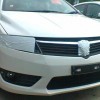

Proton Prevé app – more proof of the P3-21A’s name?
MARCH 29, 2012 AT 8:32 PM BY PAUL TAN FILED UNDER CARS, PROTON PREVE
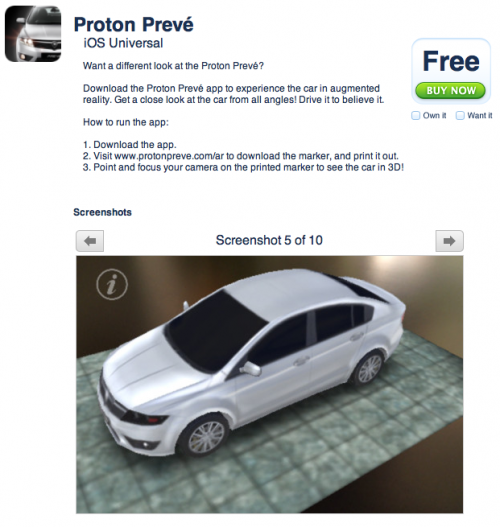
Here’s more proof that the upcoming Proton P3-21A will be called the Proton Prevé – reader Mustaqim dropped us a note pointing to this App Shopper link showcasing a Proton Prevé iOS app. The Proton Prevé app appears to be an augmented reality marketing tool and the App Shopper listing includes a few screenshots of the app, however when we tried to look for it on the App Store it was nowhere to be found.
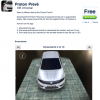




Hello P3-21A, are you called the Proton Prevé?
MARCH 29, 2012 AT 4:30 PM BY DANNY TAN FILED UNDER CARS, LOCAL NEWS, MALAYSIAN MAKES, PROTON, PROTON PREVE
We already know a fair bit of the soon to be launched Proton P3-21A – we have spyshots,videos of it in action, a leaked spec sheet and the estimated price. All we need now, short of Proton’s “world car” being officially launched, is a name to replace the robot sounding codename P3-21A. Well, we have one now!
This image has been circulating online, and it shows the C-segment sedan in a brochure like pose with the name “Proton Prevé” emblazoned above. So P3-21A, is your real name Proton Prevé?
We’ll need an official explanation to confirm, but “preve” means “to prove” or “proof”, which dovetails nicely with the car’s “Drive it to believe it” tagline. There’s only so much we can say, so you’ll need to “drive it to believe it”. Here’s the “proof” that we can come up with a credible world car, I can hear Proton say. In Spanish, prevé or prever means foresee or predict.
We figure that it’s not a name that will roll off Malaysian tongues easily, and there’s bound to be many different “versions” of it, but I’m sure Proton has its rationale. See you soon, Prevé!
Proton P3-21A build-up process Day 5: Fabric Seats
MARCH 18, 2012 AT 10:31 PM BY PAUL TAN FILED UNDER LOCAL NEWS, PROTON, PROTON PERSONA R, PROTON POWER OF 1, PROTON PREVE
Well, the Proton Power of 1 event has come to an end, and so has the five-day build up process, where Proton teased us different parts of the upcoming P3-21A sedan. It didn’t exactly end up being a complete build up, as you can see from today’s photos, with the last piece of item teased being the seats.
These seats are wrapped with fabric, as indicated by the leaked spec sheet. We expect an SE variant in the future to introduce leather seats as well. The rear bench has two headrests and a fold-down arm rest which integrates two cupholders, which is convenient.

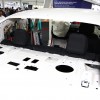
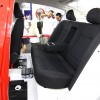
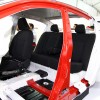
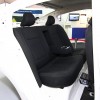
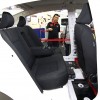
Proton P3-21A build-up process Day 4: Headlamp
MARCH 18, 2012 AT 2:29 AM BY PAUL TAN FILED UNDER CARS, PROTON PERSONA R, PROTON POWER OF 1, PROTON PREVE
Day 4 of Proton’s P3-21A build up showcase at the Proton Power of 1 event Bukit Jalil sees the front fenders from Day 3 removed but the addition of a fully uncovered headlamp, along with plastic supports in the engine bay. Wonder what will Day 5 bring us?

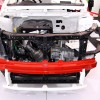
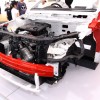
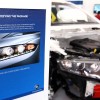

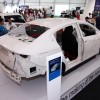
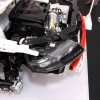
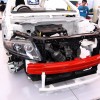
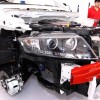

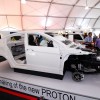
Proton P3-21A build-up process Day 3: Body Design
MARCH 16, 2012 AT 5:26 PM BY PAUL TAN FILED UNDER PROTON, PROTON PERSONA R, PROTON POWER OF 1, PROTON PREVE
Today is day three of Proton’s Power of 1 showcase at Bukit Jalil, and the Proton P3-21A day-by-day build-up process has been updated again, this time with various body panels such as the front doors, front and rear fenders as well as the bootlid.
We also managed to snap a picture of the bootlid open, so this should give you an idea of the width and height of the luggage area opening, as well as whether the boot lid hinges intrude much into the opening and the wheel wells, into the boot space.
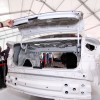
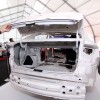
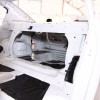
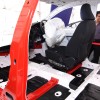

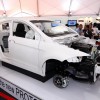
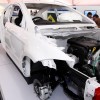
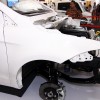
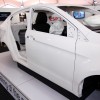
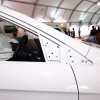
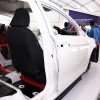
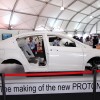
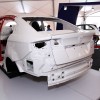
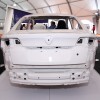
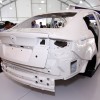
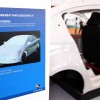
http://paultan.org/topics/special/proton-preve/


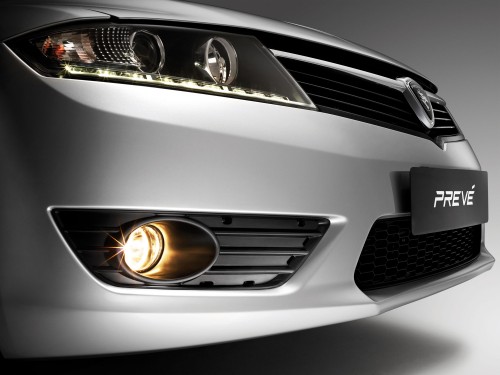

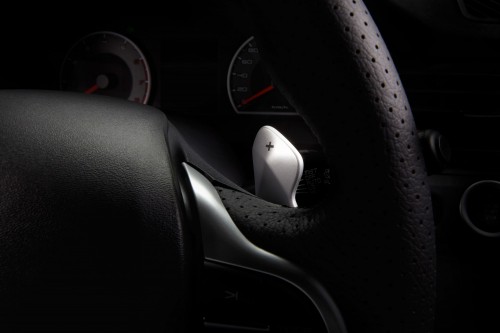
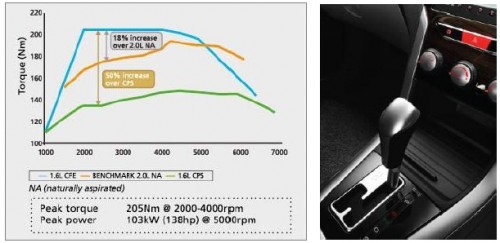

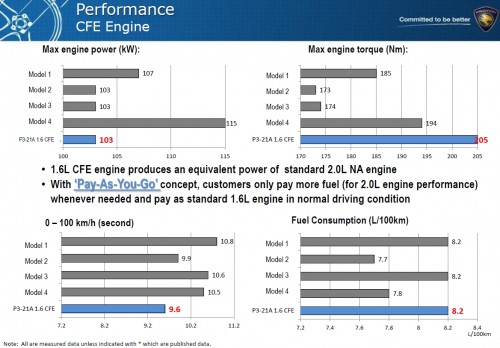
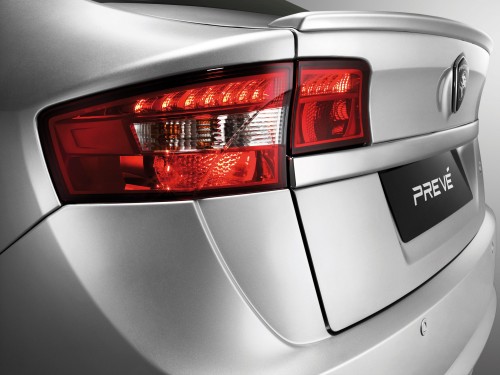
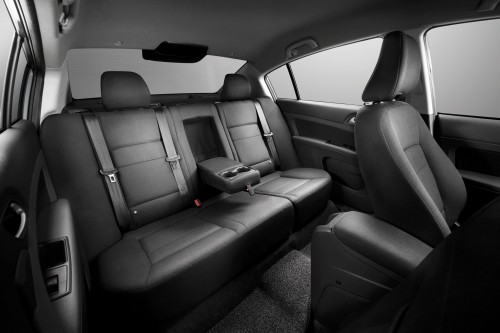
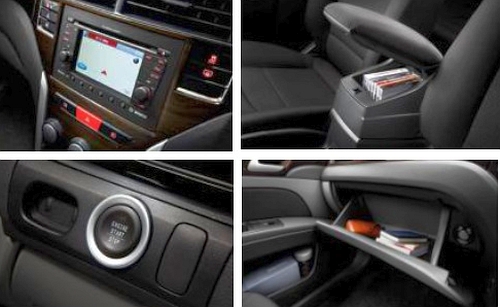

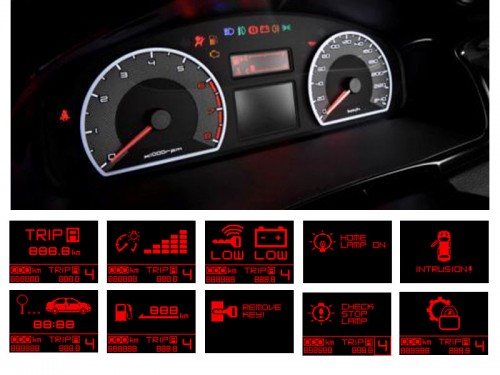
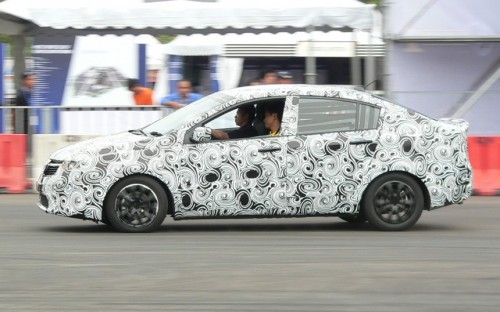
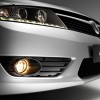

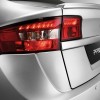
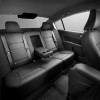
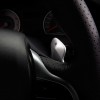


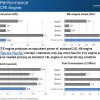
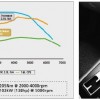
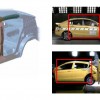
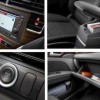
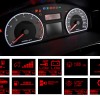
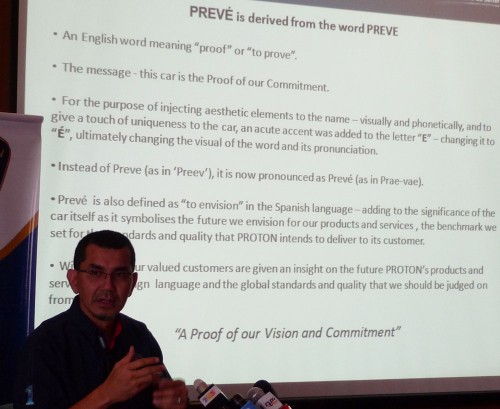


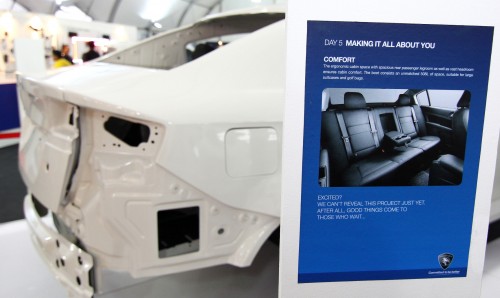

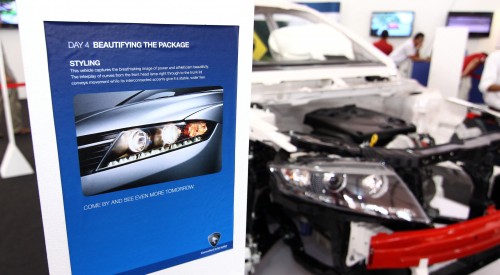
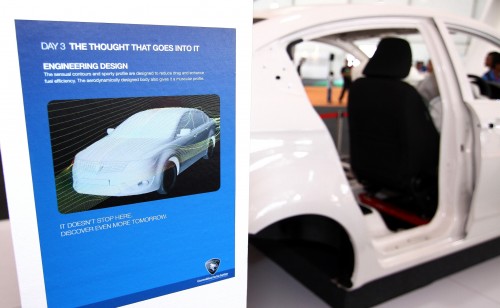
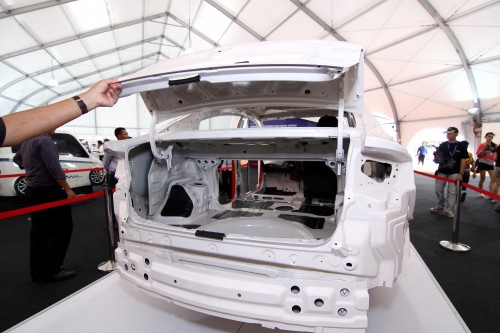

wooooo what a car...
BalasPadamtruly mouthwatering...filled with load of features...
CAR of dreams...8)
Turbochargers